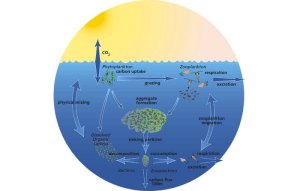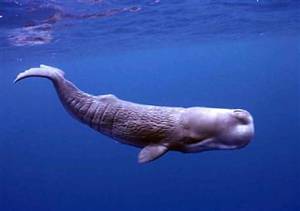
Monteverde Cloud Forest (http://www.monteverdecostarica.com/)
Monteverde is an interesting place but in some ways represents the lull in our trip. The region is home to a rare type of ecohabitat called cloud forest which is characterized by low-level clouds that sit at canopy-level among the trees. The constant presence of the clouds means the forest is always wet and mossy. The composition of flora and fauna tends to be very different here than elsewhere in Costa Rica. However, wildlife is harder to see here, thus a tricky endeavor during shorter visits like our own. Most people are better served here by an interest in plants. There are hundreds of epiphytic species that use stronger, hardier plants for structural support, but typically derive nutrients from the air that surrounds them (“All I need is the air that I breath…”) and from detritus that accumulates around their roots.
There are two reserves to visit, the Monteverde Reserve, and the Santa Elana Reserve, named for a nearby town. We choose to visit the Santa Elena Reserve as it’s close to some other interesting local attractions, including the Selvatura Park.
As we are about to start out for a relaxed hike, we meet a group of graduate students including a PhD canidate from UConn researching ants, who tell us they are headed to biological research station somewhere nearby. After searching online, their description most likely fits the Monteverde Conservation League, a non-profit dedicated to research, outreach, education, and the preservation of the cloud forest. This work seems even more timely as cloud forests are extremely sensitive to the effects of climate change. Though they have been resilient in response to historical temperature fluctuations, too much warming could affect the characteristic cloud cover here and completely change the hydrological regime.
We start our walk through the forest and start to appreciate most of the diversity we see on a more micro scale. Tiny dew drops that refract the incoming bursts of light. The forest is abuzz with texture, smells, and sounds. Just like every location we will visit during our stay, we hear the constant throb of cicadas in the background, a sort of gregorian chant celebrating the sheer grandiosity of the life force surrounding us.

Small epiphytic plants are abundant in the Costa Rican cloud forest (Copyright: Robert Schuman 2011)
There are a few errant clips of bird song and we do manage to spy a collared red start hopping along the path – one of the happiest looking birds I’ve ever seen. Though we’re never lucky enough to see one, Monteverde is also home to a renowned bird called the quetzal.

Collared redstart (http://www.billhubick.com/costaRica.html)

Quetzal (http://www.billhubick.com/costaRica.html)
The last thing we do before heading back to the lodge, is visit the Insect exhibit, “Jewels of the Rainforest.” in Selvatura Park. Both my Lonely Planet and Moon guide list this as a not-to-miss stop. The collection, one of the largest in the world, is the culmination of years of collecting by entomologist Richard Whitten , who moved with his wife to Costa Rica to begin collecting and studying metallic beetles, most likely in the Buprestidae family. The exhibit covers all manner of creepy crawlies however, with wall after wall of them encased in glass.

Costa Rican metallic beetles (http://www.sciencenewsblog.com/pics/costa_rica_metallic_beetles.jpg)
The highlight of the collection are most certainly the iridescent butterflies positioned ornately in spirals and geometric arrangements, or against other beautiful objects, like peacock feathers, that serve to enhance their natural elegance (Roger Whitten’s wife was said to be responsible). The morpho, a very large shimmering blue butterfly we’ve already seen around the country, is featured heavily in the exhibit. I also love the many delicate examples of glass butterflies, with their barely-there transparent wings on display.

Morpho butterfly - Jewels of the Rainforest Exhibit (http://www.flickr.com/photos/12928926@N06/sets/72157621807255630/)
There are many other examples of insects with less friendly personas. Viewing bird tarantulas, whip spiders, millipedes, parasitic wasps, and Giant Goliath beetles make my skin alight with a crawling sensation. There are walls dedicated to insects vectoring disease in Costa Rica and another showing the great variety of species in Monteverde alone including several ridiculously large spiders and more bullet ants. Though we saw sparse wildlife on our earlier hike, it’s a little unsettling to know what’s going on off trail.
We stop for a little while in the town of Santa Elana and have lunch at a local soda called the traveling man. Rice with pollo (chicken), crispy yucca, plantains, and some variety of local orange soda. The town is small, essentially a triangle of streets loaded with tourist traps, and a few interesting places we make a mental note to visit the next day. We work our way back to the Cloud Forest Lodge for a quiet night. There is yet another cat who seems to target the foreigners for love and affection. He (we’ll just call him “Alejandro”) makes no qualms about following us into our room, curiously checking out our luggage, and making sure to lounge on every inch of free shelf space we have to put our things. We will later hear him pulling the same con on new arrivals, and meowing with loud intent the next morning at the door of everyone who just might listen…








